Aboriginal Australians 'still suffering effects of colonial past'
The death of George Floyd in the US has also hit home in Australia.
It has brought anger about mass incarceration and police brutality back to the fore in this country.
In the past three decades, more than 400 Aboriginal people have died in custody, either being held in prisons or under the arrest of the police - despite findings and recommendations from a national inquiry in 1991. Many have died under suspicious circumstances, some due to negligence or lack of medical assistance. No-one was convicted for any of those deaths.
And like in the US, there have been calls to shift resources away from policing and prisons and towards empowering indigenous people to make the decisions that affect their community.
Some projects are getting government funding. Keenan Mundine's small charity, Deadly Connections, relies mainly on donations.
Keenan, a 33-year-old Aboriginal Australian, tries to keep young people away from prison and help them navigate the often-tense relationship with the police.
"The only time the blue uniform comes into our community is to take away a loved one," he says.
I asked him how he feels when he sees a policeman.
"Fear!", he answers almost immediately.
 Keenan Mundine
Keenan MundineWe are spending the afternoon in the neighbourhood where he grew up in Redfern in inner-city Sydney.
He points to different tower blocks, each with a different encounter with the authorities. One where his best friend was chased by the police and fell to his death from a balcony.
"I was actually arrested once in that very place we are right now," he says, as we stand by the pavement facing the towers and a basketball court.
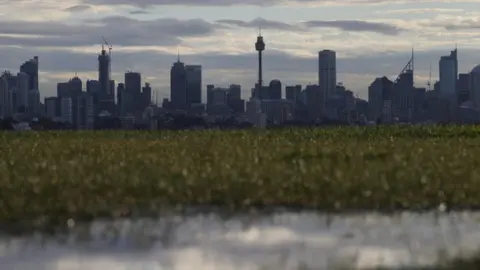 Reuters
Reuters"I used to play on those streets and dream of better days, of not being broken. Not being chased by the police. Some kids that I played with lost their lives because of the police," he says.
Keenan was taken into care at the age of six when he lost both his parents - his father to suicide, his mother to a drug overdose.
By 14 he was in juvenile detention for theft. He was also involved in drugs and spent much of the next 15 years behind bars.
His memories of this time are blurred, but he does remember the birthdays.
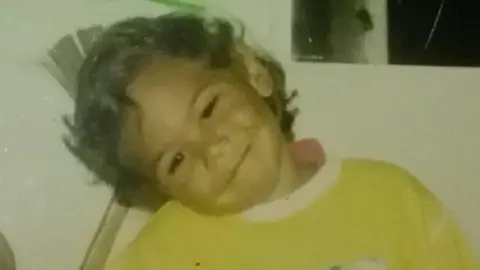 Keenan Mundine
Keenan Mundine"I turned 18 in juvenile custody," Keenan says in tears.
"When those days come around, you just want to be around your family, you just want to be loved. You want to feel normal. You don't want presents, you don't want anything else but to be at the table with your loved ones," he adds.
Keenan has turned a corner in his life. He's been clean and out of jail for a few years now. He's married and has two little boys Khaius and Khyreese.
He's a devoted father and keeps a close eye on them while we talk. Then takes them to the swings. He worries for their future.
He says the justice system has unfairly targeted young Aboriginal people like him for years and that this hasn't changed
"I live in constant fear of my children being put in the same position that I was and having things happen to them that were out of their control and traumatising them for the rest of their life.
"I worry about them growing older and being arrested by the police and being taken to prison," Keenan says.
Colonial roots
His fear is echoed among thousands of other first nations families.
While indigenous Australians make up less than 3% of the population, they represent more than a quarter of adult prisoners.
More than half the children sentenced to juvenile detention in Australia are Aboriginal.
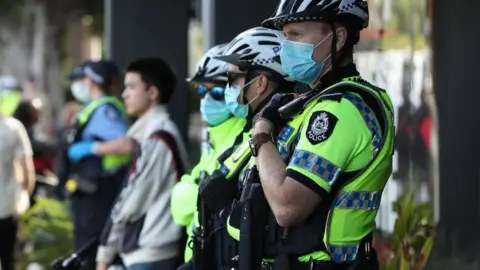 Getty Images
Getty ImagesAnd an indigenous teenage boy is more likely to go to jail than to university.
"The over-incarceration of Aboriginal and Torres Strait Islander people today is a direct legacy of colonisation in Australia," says Roxanne Moore, executive officer for the National Aboriginal and Torres Strait Islander Legal Services.
Massacres and the jailing of indigenous Australians enabled British settlement here from the late 18th Century.
Police played a big part in forcing people off their land.
And right up to the 1970s, police took part in the removal of huge numbers of indigenous children from their homes, to be adopted by white families or put in institutions.
The Stolen Generations
The forcible removal of indigenous children from their families was a result of various government policies of assimilation which assumed black inferiority and white superiority.
The objective of these policies was for indigenous people to be allowed to "die out" through a process of natural elimination, or where possible, be assimilated into the white community.
The generations of children removed from their homes and families became known as the Stolen Generations and the legacy of trauma and loss continues to haunt many Aboriginal families until today.
"This is not in the past for us, we feel the impact and the legacy of colonisation every single day... particularly in the justice system," says Ms Moore.
"We still see the repercussions of that in the over-policing of our people, in the systemic discrimination that still exists."
She added that one of the reasons it becomes very hard to leave the justice system once a young person is in it, is because it is stacked against Aboriginal and Torres Strait Islander people at every level.
"From police interactions, to the courts, through to the sentences in prison, being denied bail, through to black deaths in custody. That's why we need structural change in order to get true justice for our people," she says.
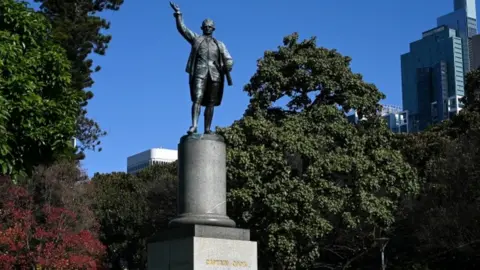 Reuters
ReutersStatues of Captain James Cook mark the British explorer's arrival here in 1770.
But he is a controversial figure with a questionable legacy.
Many see him as a hero. Others see him as the man who opened the door for the displacement and dispossession of Australia's first nations people.
There were attempts by some leaders to acknowledge Australia's difficult past. But it never went far enough for indigenous Australians, who are still not mentioned in the constitution, for example.
In February 2008, then-Prime Minister Kevin Rudd formally apologised to Australia's indigenous people for the policies that have caused centuries of continued suffering and in which the police played a big part.
It was a key moment. But for many, the moment passed with no real change.
Despite a number of government initiatives, indigenous Australians continue to be disadvantaged on every level, from health and education to life expectancy.
Keenan takes me to see a couple of the teenagers he works with, Chaise Patten and Malakai Marr.
They meet not far from Keenan's old neighbourhood and chat over some food and a game of basketball.
Fifteen-year-old Chaise said the biggest challenge facing him as a young Aboriginal person is the colour of his skin and where he lives.
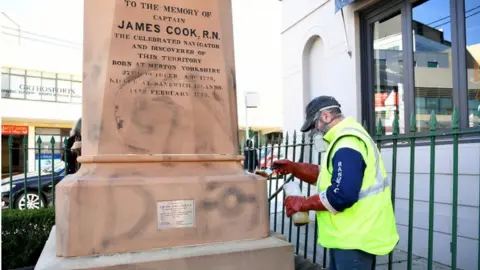 Reuters
Reuters"There are a lot of people on drugs. A lot of crime," he says, adding that many of his family members have gone down that path.
"We don't want to follow that. We want to work. Get our own jobs."
Malakai said another challenge is that there's always doubt over their ability to succeed.
"I just want to be a good kid. But the police think because I'm black, I'm just going to end up in jail - selling drugs. I'm not like that, I want to own my own business and go to university."
These young people are hoping to change the narrative and for their future to be different from their ancestors' past.
Keenan said that is why he goes back to his old neighbourhood and the areas around it.
"When I go back, I see my story happening all over again. I see a lot of struggling still," he says.
"I was traumatised by this community. But I want to come back and be able to show that there's hope. That your circumstance will not define who you can be."

Read more stories about the legacies of British colonial rule and how it is still affecting people today:
